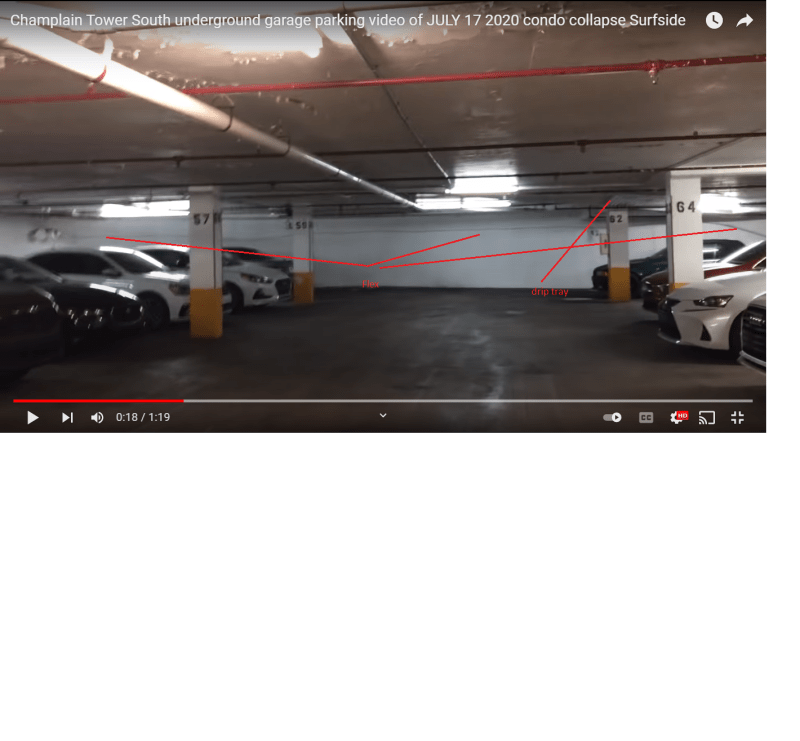IanCA said:
@dik, I was wondering whether sulfates would really be an issue in Surfside with that fresh sea breeze.
IanCA, I realize this question was for dik, but I have some thoughts for consideration.
We know from core samples that the interior portion of the structural slab was the part that looked powdery like gypsum. In addition, we know from Morabito's Mechanical Engineer inspection, at least two exhaust fans needed repair (belts and bearings).
I annotated in thread 15 on Morabito's Drawings where the 4 exhaust fans were located. The only air intake I see on plans for exhaust fans is thru the entrance gate to the parking garage.
If you look at the location of fresh air intake from garage gate source to the 4 exhaust fan locations, that results in a stagnant air flow area at South wall from around pool room doors on east side, and along south wall towards the west, where slab to wall connection appears to have failed first.
There is a pool room exhaust fan that is ducted from pool room to planter above structural garage roof deck. The only air intake for that exhaust fan appears to be either a gap between the pool and the East retaining wall, or perhaps a louver in pool room doors to pull air into pool room. This exhaust system is separate in function from the other 4 exhaust fans.
What about auto tail pipe emissions in parking garage and sulfates like sulfuric acid? I believe diesels produce more sulfuric acid at tail pipe than gasoline engines.
We know there was Great water source on top of garage ceiling structural slab.
Point is could the interior change of state concrete layer be due to tail pipe emissions and poor exhaust fan layout and maintenance such that a lot of tail pipe emissions were staying in garage for extended periods to react with interior layer of concrete?
Could we have multiple things going on as far as acid and base reactions at different locations?

![[ponder] [ponder] [ponder]](/data/assets/smilies/ponder.gif)
